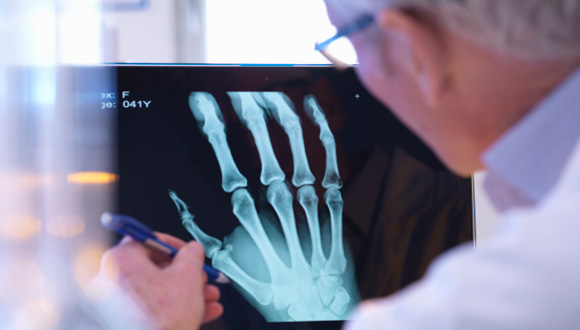When a condition or disorder prevents you from using your hands, your quality of life can be significantly hindered. You stop writing. You can’t dress, bathe or feed yourself.
Dr. Jamie Alexander, a hand-and-wrist specialist at Houston Methodist, describes the most common hand conditions and their treatments.
Arthritis
About one in four people older than age 18 have been diagnosed with arthritis.
“Arthritis in the hand is really common, both in males and females,” Dr. Alexander says.
The condition can occur throughout the hand and wrist and may have more than one cause. Arthritis treatment primarily relieves pain and improves function.
“In the case of early stage arthritis in the base of the thumb, we typically try treatments like braces or injections to help relieve some common symptoms,” Dr. Alexander says.
She said occupational therapy and medications also may work. Surgery may be recommended if more conservative options don’t relieve symptoms.
Carpal tunnel syndrome
The carpal tunnel, made of ligaments and bones, is a narrow passage from the wrist to the hand. Carpal tunnel syndrome develops after the carpal tunnel is squeezed or pinched, causing pain, weakness or numbness that radiates to the fingers. Carpal tunnel syndrome risk factors include family history of the condition, pregnancy, diabetes or a thyroid condition and repetitive hand movements over time.
“It’s one of the most common conditions we see patients for,” Dr. Alexander says. “They come in saying their hands feel constantly tingling or numb or are cramping up. I take things conservatively until I figure out the severity of the syndrome and then have them get a nerve conduction test to find out if there’s any other compression happening such as in the neck or arm.”
Carpal tunnel syndrome treatments include wrist splinting, occupational therapy and corticosteroids injections.
“If the condition appears severe, I may recommend surgery before things get worse,” Dr. Alexander says.
Trigger finger
Trigger finger, or stenosing tenosynovitis, causes fingers to lock in a bent position.
“It can get pretty disabling,” Dr. Alexander says. “Patients can have trouble performing simple tasks like grabbing a cup.”
People at greater risk for trigger finger include women, those with diabetes or rheumatoid arthritis and those who regularly perform repeated and prolonged gripping. Treatment for less severe cases include avoiding repetitive hand motions or using a splint.
“A fairly conservative approach to treating more severe trigger finger is the use of steroid injections,” Dr. Alexander says. “It’s a common treatment that can be effective for a year or more. Patients looking for a permanent fix to the condition can opt for surgery.”


